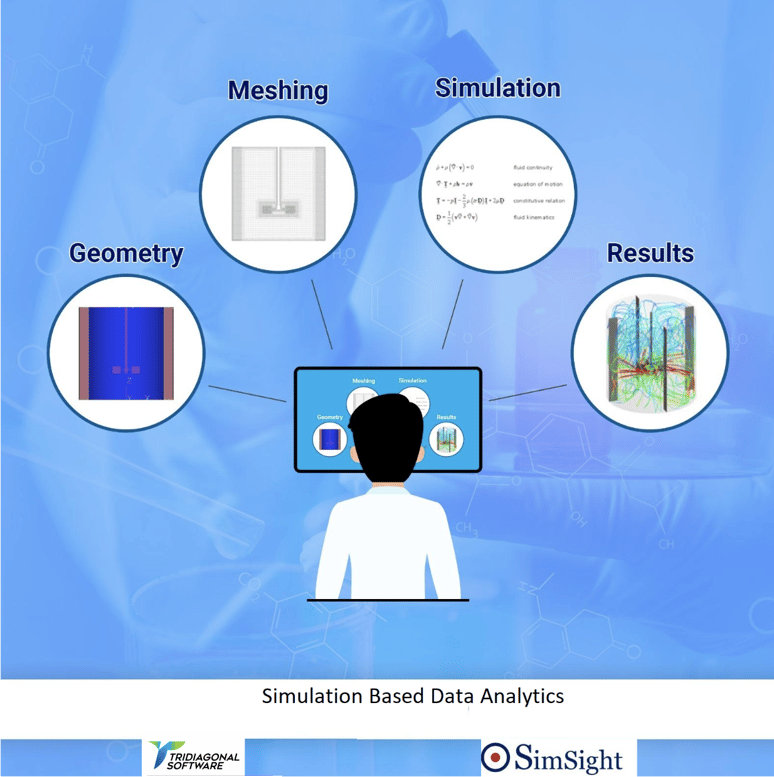
In the dynamic landscape of decision-making, data takes center stage. However, challenges such as incomplete data, prolonged decision timelines, and resource loss due to delays are significant hurdles. This is where simulations come into play – a strategic approach empowering decision-makers to test scenarios, assess outcomes, and make informed choices.
Impact of simulations
Simulation helps with testing. various scenarios, assess potential outcomes, and make informed choices based on the insights gained. Below are some of the impacts of simulations.
- Risk Assessment: Simulations empower decision-makers to assess potential outcomes, enabling them to make informed choices rooted in a comprehensive understanding of diverse scenarios. This proactive approach to risk evaluation significantly enhances the decision-making process.
- Resource Optimization: By simulating different scenarios, decision-makers can pinpoint the most efficient allocation of resources. Whether it’s manpower, equipment, or budget, simulations provide valuable insights to optimize these critical elements and achieve desired outcomes with precision.
- Crisis Management: Simulating emergency situations becomes a strategic tool for decision-makers. It allows testing of response strategies, identification of potential bottlenecks, and improvement of coordination among stakeholders, thereby enhancing crisis management capabilities.
- Process Improvement: Organizations benefit from simulations by identifying and eliminating bottlenecks, reducing waste, and optimizing workflows. This process-centric approach leads to more streamlined operations and resource utilization.
- Strategy Evaluation: Simulations offer decision-makers a controlled environment to evaluate the effectiveness of different strategies. By simulating various market conditions, competitive landscapes, and customer behaviours, organizations can assess potential outcomes and make strategic choices with a higher degree of certainty.
How Simulation Supports Decision Making
- Real-Life Situations: Simulations replicate existing process conditions, enabling the testing of vital decisions in a risk-free environment. This practical application aids decision-makers in gauging the real-world impact of their choices.
- Reduce decision paralysis: Fear of making mistakes can result in decision paralysis. Simulations provide a safe, controlled environment for employees to make mistakes and learn from them. This iterative learning process significantly reduces decision paralysis and fosters a culture of continuous improvement.
- Measurable results: Simulations contribute to business decision-making by providing measurable results. The insights derived from simulation outcomes offer the necessary data to make swift decisions, allowing organizations to respond promptly to dynamic business environments.
- Resource Optimization: Simulation’s role in reducing process time directly contributes to resource optimization. By streamlining operations, organizations can optimize their requirements for raw materials and other resources, leading to cost savings and increased efficiency.
Potential Pitfalls
However, decision-makers must be mindful of potential pitfalls in the decision-making process:
- Decision Making Based on Incomplete Data: Relying on incomplete data can lead to flawed conclusions. Simulations should strive to incorporate comprehensive and accurate data to ensure the reliability of the insights generated.
- Time Taken to Make the Decision: While simulations can expedite decision-making, there’s a risk of undue delays if not properly managed. Decision-makers must balance the need for thorough analysis with the urgency of timely responses.
- Loss of Resources Due to Delayed Decision Making: Protracted decision timelines may result in resource loss. Simulations should aim to enhance efficiency, preventing unnecessary resource drains and ensuring optimal utilization.
Steps To Utilize Simulation Data
- Define the Vision: It is important to define how simulation data will be leveraged. Without context, data lacks meaning. Clearly outlining the vision ensures that simulation insights align with the overarching goals of the organization.
- Data Sources: Identifying and selecting relevant simulation data sources is fundamental. Decision-makers must focus on collecting data that directly contributes to the decision-making process, ensuring that the insights gained are both meaningful and actionable.
- Organize Data: Efficiently organizing data is pivotal for effective business decisions. A well-organized dataset enhances data visualization, making it easier for decision-makers to interpret and act upon the insights generated by simulations.
- Perform Analysis: Extracting actionable insights from simulation data is the next critical step. Decision-makers must delve into the data, analyze patterns, and identify key trends that can inform and guide the decision-making process.
- Making Conclusion: Analyzing simulation data accelerates the decision-making process. By leveraging the insights gained, organizations can arrive at conclusions swiftly, fostering agility and responsiveness in an ever-evolving business landscape.
Conclusion
Simulations emerges as a potent tool in the intricate realm of decision-making. The ability to assess risks, optimize resources, manage crises, improve processes, and evaluate strategies systematically positions simulations as a cornerstone of informed decision-making. The practical application of replicating real-life situations, reducing decision paralysis, and providing measurable results enhances the utility of simulations in the business decision-making process.
However, it is essential for decision-makers to navigate potential pitfalls wisely and ensure that simulations are conducted with a comprehensive understanding of the risks involved. As organizations continue to navigate the complexities of the business landscape, simulations stand as a strategic ally in the pursuit of optimal decision-making.
Curious to know how Simulation data can help you in decision making? Talk to us
Have a Question?
If you need assistance beyond what is provided above, please contact us.
